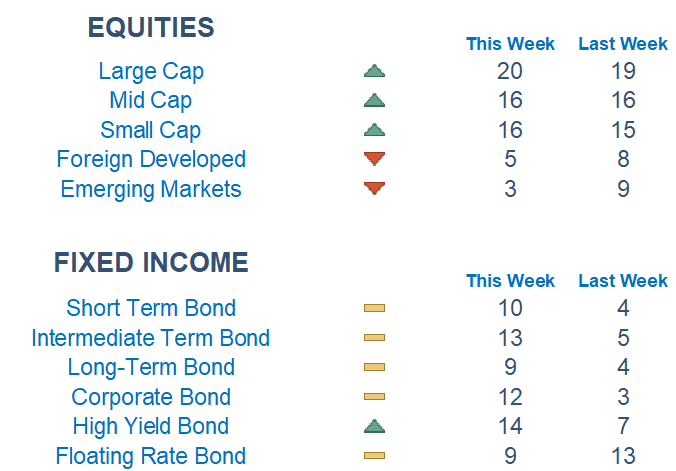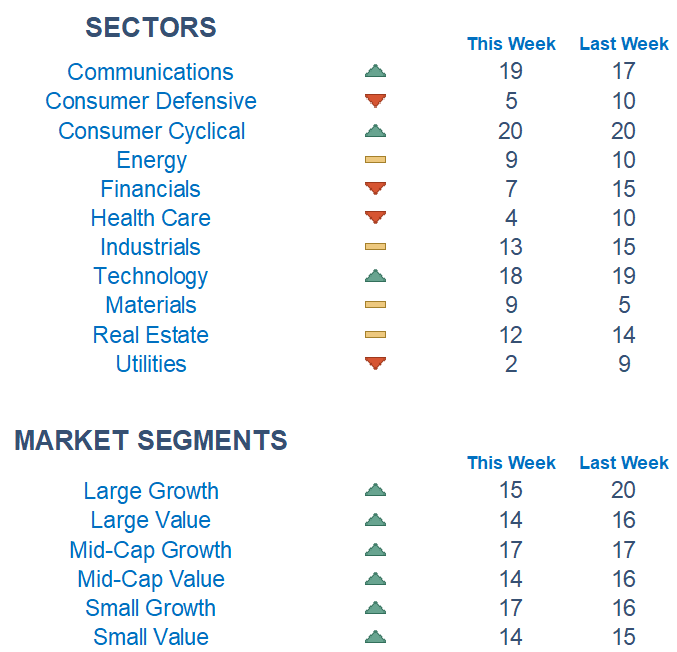Our models favor domestic indexes over foreign ones. Large-cap names have a slight edge over small caps, as the gap between the two narrows.

This Week on Wall Street - Week of July 10th
Market Commentary
Our models favor domestic indexes over foreign ones. Large-cap names have a slight edge over small caps, as the gap between the two narrows. Anxiety among investors is high as we begin to enter Q2 earnings season. Earnings forecasts might matter more to investors given the large rally in the first half of the year giving way to elevated valuations.
Traders are awaiting yet another pivotal inflation reading Wednesday for clues on how much longer the Fed will hike. Today, Cleveland Fed President Mester said the Fed needs to keep hiking somewhat to make sure inflation comes down to its 2% target. Estimates are for the inflation gauge to retreat to 3.1% from 4% last month.
Among sectors, we are seeing Discretionary, Communications, and Technology on top for yet another week. However, breadth has also improved in other areas of the market. Picking names with relative strength within most sectors has remained the dominant and most effective strategy.

What is Newton?
Our Newton model attempts to determine the highest probability of future price direction by using advanced algorithmic and high-order mathematical techniques on the current market environment to identify trends in underlying security prices. The Newton model scores securities over multiple time periods on a scale of 0-20 with 0 being the worst and 20 being the best possible score. Trend & level both matter.

Economic Releases This Week
Monday: Consumer Credit, Cleveland Fed President Speaks, SF Fed President Speaks
Tuesday: NFIB Optimism Index
Wednesday: Consumer Price Index, Atlanta Fed President Speaks, Richmond Fed President Speaks,
Thursday: Initial & Continuing Jobless Claims, Existing Home Sales, Producer Price Index, Fed Governor Waller Speaks
Friday: Consumer Sentiment, Import Price Index

Technical trading models are mathematically driven based upon historical data and trends of domestic and foreign market trading activity, including various industry and sector trading statistics within such markets. Technical trading models, through mathematical algorithms, attempt to identify when markets are likely to increase or decrease and identify appropriate entry and exit points. The primary risk of technical trading models is that historical trends and past performance cannot predict future trends and there is no assurance that the mathematical algorithms employed are designed properly, updated with new data, and can accurately predict future market, industry and sector performance.
